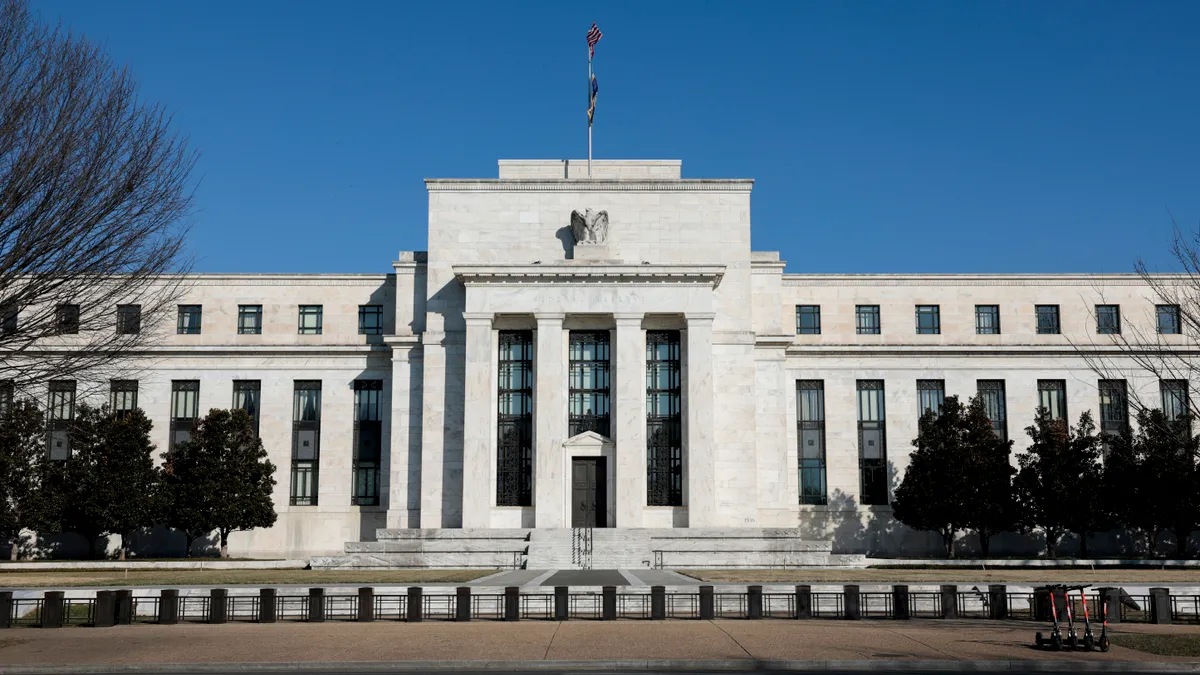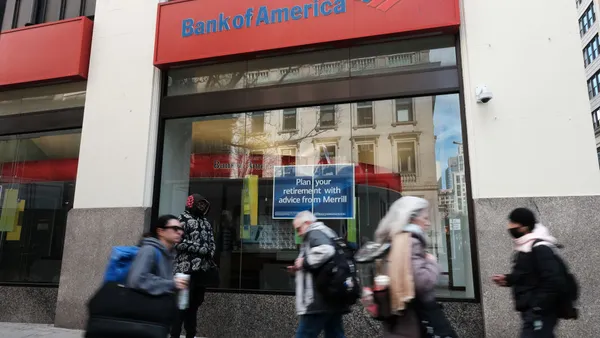The Federal Reserve, Federal Deposit Insurance Corp. and the Office of the Comptroller of the Currency on Thursday delayed until 2026 the implementation date for portions of the Community Reinvestment Act final rule they issued in October.
The most impactful change amends the notion of assessment areas — the geographic footprint served by branches, ATMs and offices — for the purposes of checking CRA compliance.
Under the October version of the rule, banks deemed large would have had to include only whole counties in their assessment areas — rather than including partial counties, as they had been doing — and to update these assessment areas by April 1.
Thursday’s changes push that effective date to Jan. 1, 2026 — and eliminate a loophole that would have forced some banks that are now considered large under the CRA to re-draw their assessment areas to meet the April 1 deadline, only to be considered “intermediate” in size under a new set of thresholds taking effect in 2026. With that intermediate label, they’d again be allowed to use partial counties in their assessment areas.
Fed Gov. Michelle Bowman, perhaps the most vocal regulator opposed to the October CRA update, said the fact that agencies amended the proposal less than six months after issuing it “provide[s] more evidence of the rushed and overzealous nature of the CRA rulemaking process.”
“In my view, the appropriate approach to address the changes … would have been a re-proposal,” Bowman said in a statement Thursday.
Calls for re-proposal are becoming more common with contentious regulation – especially from Republicans in a presidential election year.
House Financial Services Committee Chair Patrick McHenry of North Carolina and 28 other Republicans in Congress urged the Fed, FDIC and OCC this month to withdraw and re-propose a July measure that would require the biggest U.S. banks to hold roughly 19% more capital and align them more closely with the Basel III endgame. The July proposal has generated roughly 400 public comments — most opposed to the measure, Fed Chair Jerome Powell testified this month.
Some Republicans may favor re-proposal because it would extend the regulatory process for CRA (or capital requirements, as it were) — making it less likely such Democrat-led rules would ever take effect if a Republican is chosen in November to occupy the White House.
But Bowman is hardly alone in raising objections to the CRA proposal. Advocacy groups including the Independent Community Bankers of America, American Bankers Association and the U.S. Chamber of Commerce sued the regulators in February to block the updated CRA rule from taking effect.
“The new and unnecessarily complex evaluation could result in banks being forced to close branches or reduce product offerings,” ICBA CEO Rebeca Romero Rainey said in a prepared statement. “The agencies’ approach penalizes many smaller institutions, eroding the diversity of institutions and products that drive much-needed access to banking services, credit and reinvestment in communities around the country.”
Bowman’s objections Thursday touched on the cost of compliance — and to the timing of the CRA amendments.
“It is unrealistic to expect that banks have not already expended significant resources to comply with this new requirement,” Bowman said. “Banks do not wait until a week before a new rule becomes effective to ensure that they are in compliance.”
Regulators changed at least one other notable aspect of the CRA proposal Thursday. They delayed until 2026 a “public disclosure” measure that requires banks to keep a readily available file of branch locations, services and a performance record with regard to the community’s credit needs.
Bowman, for her part, said she is “concerned” Thursday’s changes wouldn’t be the only ones of significance “given the length and complexity of the final rule.”
At 1,500 pages, the proposal’s length has also generated backlash.
The regulators are taking public comments on the amendments to the CRA rule for 45 days, but the interim final rule is set to take effect April 1.














